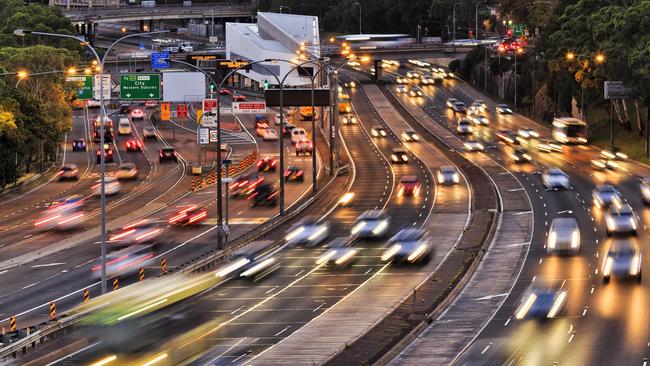Regional reasons to quit city rat race
Australia’s biggest cities are so congested they’ve reached their peak of productivity while regional towns offer scope for economic growth.

Australia’s biggest cities are so congested they have reached peak levels of productivity, while many regional towns offer jobs, affordable housing, lifestyle and scope for economic growth.
A research project by independent think tank the Regional Australia Institute has compared wages, employment, congestion and house prices among outer suburban and metropolitan areas, and the regions.
The study, in conjunction with the University of South Australia and Southern Cross University, found that while wages might be less in the regions compared to cities, job prospects are often at least as good, and housing a half or a third of the price.
The RAI said the research pointed to a greater chance of economic stagnation in coming decades if the concentration of population growth in big cities continued, rather than being dispersed outside them.
“Our big cities are already pretty much at the top end of the benefits of the high density we have,” RAI co-chief executive Kim Houghton told The Australian. “Don’t fall for the view that everything is in decline in regional Australia, because it’s not, and the lifestyle opportunities are pretty positive.”
MORE: Samoans replace local job snobs
The study found while the average inner-city Sydney salary is $102,000, outer-suburban Sydney workers typically earn $80,000, whereas their NSW regional counterparts have an average wage of $71,000. In Melbourne, average inner-city wages are $85,000, outer-suburban salaries $75,000, while those in the Victorian regional centres are $59,000.
But the difference in wages is dwarfed by the contrast in housing affordability. In Sydney, the average price for a house is about $1.8 million in the inner city, and $1m in the outer suburbs, but only $500,000 in regional NSW centres. In Melbourne, the average inner-city home costs $1.2m, while one in the outer suburbs is $800,000, and in Victoria’s regional centres, $345,000.
The RAI made projections of population growth and congestion in the major cities through to 2056. In Sydney, the outer suburbs would more than double in population, compared to a 72 per cent rise in the inner city and a 46 per cent rise in a selection of NSW regional areas.
Scenario modelling found under the “business as usual” base case, commuting distances in outer Sydney and Melbourne will increase by about 60 per cent and close to 25 per cent in outer Brisbane and Perth.
Under an “alternative distributed” population scenario, where population growth is shared more evenly between outer suburbs and regional centres, commute distances for Sydney would rise by 15 per cent and Melbourne 40 per cent.
Researchers found the potential of targeted government strategies to encourage population growth in the regions rather than the big cities could have a huge effect on country centres.
From about 66,000 at present, the NSW Riverina city of Wagga Wagga would have a population of 94,000 by 2056 under current trends, but more than 300,000 on a “dispersed regional growth high scenario”.
Warrnambool, in Victoria’s Western Districts, now at about 34,000, would grow to about 48,000 under a business-as-usual scenario, but could expand to more than 160,000 in the high-growth scenario.
Researchers found “rapidly diminishing returns for agglomeration benefits as our cities get very large”. “This is because the costs of being big, congestion and high cost of living undermine the benefits of having additional people,” the report says.
The study found most regional areas were “well below their optimum level and not receiving the full benefit of agglomeration economies”. “These results suggest residents across cities and regional areas are likely to benefit from a more widely distributed future population settlement pattern,” the report found.




To join the conversation, please log in. Don't have an account? Register
Join the conversation, you are commenting as Logout